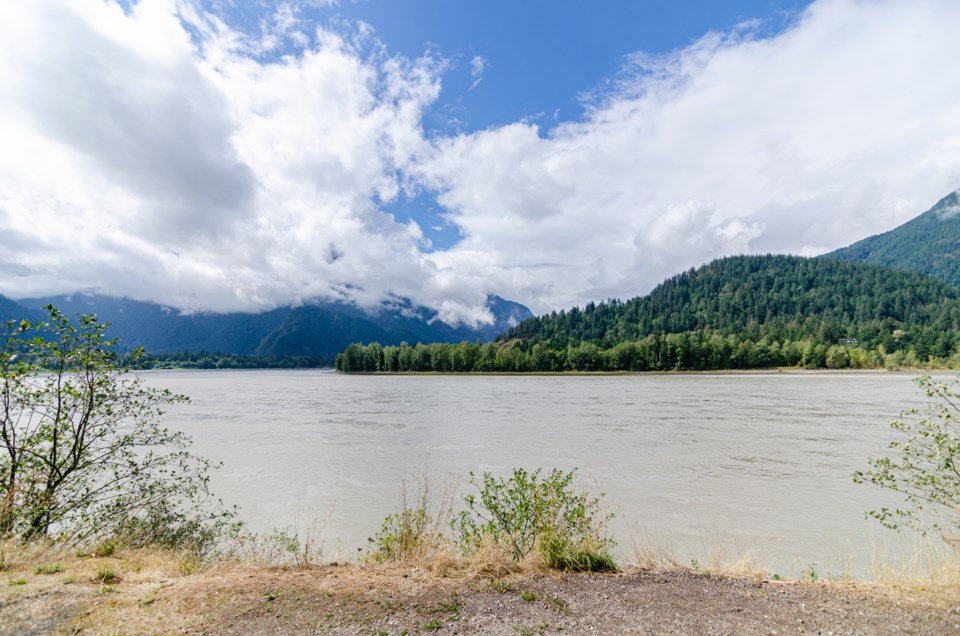Every spring, melting snow and heavy rainfall brings a higher risk of flooding and riverbank erosion to parts of Canada. Bank erosion is responsible for a significant portion of annual flood damage in Canada, with estimates suggesting the costs could grow as high as $13.6 billion annually by the end of the century.
In British Columbia, erosion is primarily managed by “hardening” riverbanks with large rocks called riprap. These rocks are so prevalent along B.C. rivers that you might think they are part of the natural environment, but they are not.
Hardened riverbanks offer temporary protection from river movement, but riprap can lead to degraded rivers. Erosion is a natural process that helps maintain healthy and diverse river habitat. However, as societies expand, there is more demand to control river movement and prevent erosion.
Through my work as a river scientist and flood risk researcher in New Zealand and Canada, I have witnessed the sometimes devastating impacts of river erosion and have also seen just how lifeless rivers can become when overly restricted.
Of course we need to protect people, property and infrastructure from riverbank erosion. But current erosion management is hurting B.C. rivers.
The problem with riprap
Riprap is essential for stabilizing riverbanks when infrastructure and property are at immediate risk. The rocks are often laid down as “temporary” erosion prevention before or during floods.
The problem is, if you harden one area with riprap, that bank transfers the erosion-hungry current elsewhere, driving the need for further riprap to be installed.
The exact impact that riprap is having on B.C. waterways requires more research, but professionals working in the province’s rivers are already seeing the damage.
During a workshop I led with colleagues from Resilient Waters and Watershed Watch, we found that in a group of 83 river and flood management professionals, 53 had witnessed adverse impacts from riprap use in the province’s Lower Mainland region.
It is now estimated that more than half of the gravel sections of the Fraser River have been hardened through riprap. To date, there has been limited consideration of the environmental consequences of such widespread bank hardening.
Riprap can bury the shallow spawning habitats preferred by many fish. It can prevent the “undercutting” of banks, a process that creates important spaces that salmon species prefer for shelter.
In addition, riprap causes water temperatures to rise as rocks trap heat from sunlight that would normally be shaded by riparian vegetation. That lack of vegetation also means less wood and debris in the rivers, which would normally add essential habitat complexity that is preferred by many fish species.
Riprap also acts as a potential migration barrier for salmon and other species trying to navigate the riverbanks. Finally, as riprap lessens available habitat for indigenous species, it can offer preferential habitat for invasive ones instead.
Given the potential for environmental harm, there have been calls to limit riprap use in British Columbia. Experts have suggested it should only be used in essential cases, ideally in river systems that are already heavily impacted by humans.
Bioengineering, revegetation alternatives
The good news is that there are bank-stabilizing alternatives to riprap.
Bioengineering involves using vegetation to create or support engineered structures. For example, live tree cuttings can be woven together to create wattles or brush mattresses. This process creates living tree walls and coverings that grow and strengthen over time.
Revegetation is another approach, using riparian planting to strengthen riverbanks with root systems. In some cases, this can be as simple as laying down seeds at the right time of year, often with other erosion control options like mulch terraces.
The key to the success of bioengineering and revegetation efforts is that they need to be done proactively. Unlike riprap, which can be installed as an emergency response measure, vegetation needs time to grow.
Next steps for B.C.
Is it possible to move on from our over-reliance on riprap in B.C.?
During our workshop, experts discussed what needs to happen to support environmentally friendly bank stabilization options.
First off, we need to be talking about the overuse of riprap more. Currently, decision-makers and property-owners are often unaware of the potential harm that riprap can have on our rivers, or that alternatives exist. While many alternatives won’t be appropriate in extreme erosion cases, for the province’s smaller and healthier rivers, they would be ideal.
For this to happen, the bank-stabilization regulation process in B.C. needs to change. Currently it is hard to receive consent or funding to undertake bank strengthening activities outside of emergency riprap installation.
The B.C. government needs to adapt local guidelines and regulations to allow wider use of alternative methods, prioritizing proactive bank strengthening. They can draw on findings from elsewhere in Canada where alternative bank-stabilization options are already being tested.
Shifting away from a dependence on riprap won’t be easy, but in a province that relies on healthy rivers and fish, it should be a priority.
As one workshop attendee put it: “We don’t want to see sterile kilometres of riprap.”
Charlotte Milne receives funding from the Social Sciences and Humanities Research Council of Canada and the Public Scholars Initiative at UBC. The research mentioned in this article received funding from UBC’s Sustainability Scholars Program and support from Resilient Waters and the Watershed Watch Salmon Society.



